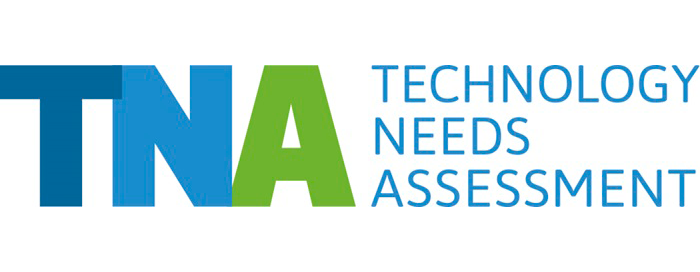What kind of technologies are best suited to a country’s specific climate change situation?
To better understand needs and priorities for technology that can help climate change mitigation and adaptation in developing countries, UNEP DTU Partnership has analysed technology priorities from our Technology Needs Assessment programme funded by the Global Environment Facility.
From solar farms in Guyana to smart water meters in Tanzania, the analysis uncovers not only where there is a need, but also focuses on barriers and provides tangible examples of how to implement climate technology.
Click to download the publication: Summary of Country Priorities – Technology Needs Assessments – 2015-2018.
“It is interesting to learn about the priorities and how they have changed in comparison to earlier Technology Needs Assessments. For example, monitoring and modelling both in the water and coastal zones sectors receive much higher priority than previously”, says senior researcher Sara Trærup from UNEP DTU Partnership.
A country driven approach
Through the Technology Needs Assessment project UNEP DTU partnership, helps developing countries assess their technology needs for mitigating and adapting to climate change.
This brochure provides an overview of 21 countries’ climate technology priorities, identified in their Technology Needs Assessments and Technology Action Plans, prepared between 2015 and 2018.
Sara Trærup has been working with the TNA programme since its inception. She explains that the country-driven approach of the project makes it able to offer national, regional, and global capacity building workshops, technical support missions, and technical backstopping through electronic means tailored to specific situations.
Energy technology is crucial to climate mitigation
For climate mitigation the energy sector was singled out as a primary concern by 86% of the countries. In second place was the transport sector, which was a priority for 32% of the countries.
In all countries the majority of mitigation technologies prioritised were related to electricity generation looking towards solar and hydro power as the most important technologies to enable the countries to work towards lower CO2 emissions.
Within the transport sector, the highest priority technologies were electric vehicles, traffic management and public transportation.
Technologies for water and agriculture creates climate resilience
When it comes to adapting to the changes in the climate that already plagues many developing countries, agriculture and water were at the top of the list, prioritized by 86% and 82% of the countries, respectively.
In the agriculture sector, crop diversification and new varieties were at the top priorities, including the introduction of climate resilient crops.
Water storage and harvesting received top priority in the water sector, including rainwater collection from rooftops, storage hardware, and surface water catchments.
Technology barriers
It is however not enough to merely identify the priorities of each country. Implementing climate technology is not only crucial in order to achieve the global climate goals; it can also be extremely difficult.
One of the main activities in the Technology Needs Assessment process is identifying barriers to getting the chosen technologies transferred, diffused and taken up in a successful, replicable manner. As many countries share similar challenges, the barriers they identify highlight common problems in the priority sectors.
The most frequently noted barriers among the 21 countries were economic and financial, affecting 90% of all technologies.
After that came barriers relating to regulatory issues, technical problems, lack of awareness and lack of capacity both human and institutional.
Overcoming the barriers
After identifying and analysing barriers as part of the TNA process, countries aided by UNEP DTU Partnership detect enabling measures that would help them overcome these challenges.
The analysis behind this new brochure shows that in line with the most commonly identified barriers; financial incentives were the most common enabling measures. They are followed, new and improved regulation and awareness programmes.
But even though financial incentives is an overarching enabling measure in many countries, it cannot stand alone. As an example of a multi sectoral approach, Belize suggested a wide range of measures including economic and financial incentives, legal and regulatory strengthening, improved skills, and information and awareness raising, to overcome bar¬riers to the diffusion and uptake of improved drip irrigation systems.
Technology Needs Assessments instrumental in global climate agenda
Before investing in technologies that reduce greenhouse gas emissions and adapt to climate change impacts, it is essential to assess and analyse a country’s specific needs, as relates to its specific set of circumstances.
Technology Needs Assessments are designed to do precisely this type of in-depth analysis. Using national sustainable development plans as a starting point, Technology Needs Assessments strengthen countries’ ability to prioritize and analyse climate technologies, guiding them towards implementation of the UNFCCC Paris Agreement.
“It is really encouraging to see how countries are using their Technology Needs Assessments as one of the tools for preparing their Nationally Determined Contributions and as a means towards implementation of actions set in these”, Sara Trærup says.
Technology Needs Assessments were directly referenced in the Paris agreement, highlighting the importance of technological change in reducing emissions and stabilizing atmospheric concentrations of greenhouse gas emissions. Moreover, helping developing countries conduct effective Technology Needs Assessments and implement Technology Action Plans has become instrumental to the UNFCCC process.
The countries included in the analysis of Technology Needs Assessment priorities include: Armenia, Belize, Burkina Faso, Burundi, Grenada, Guyana, Honduras, Jordan, Kazakhstan, Laos, Madagascar, Mauritania, Mozambique, Pakistan, Panama, Seychelles, Swaziland, Tanzania, Togo, Tunisia, and Uruguay.
